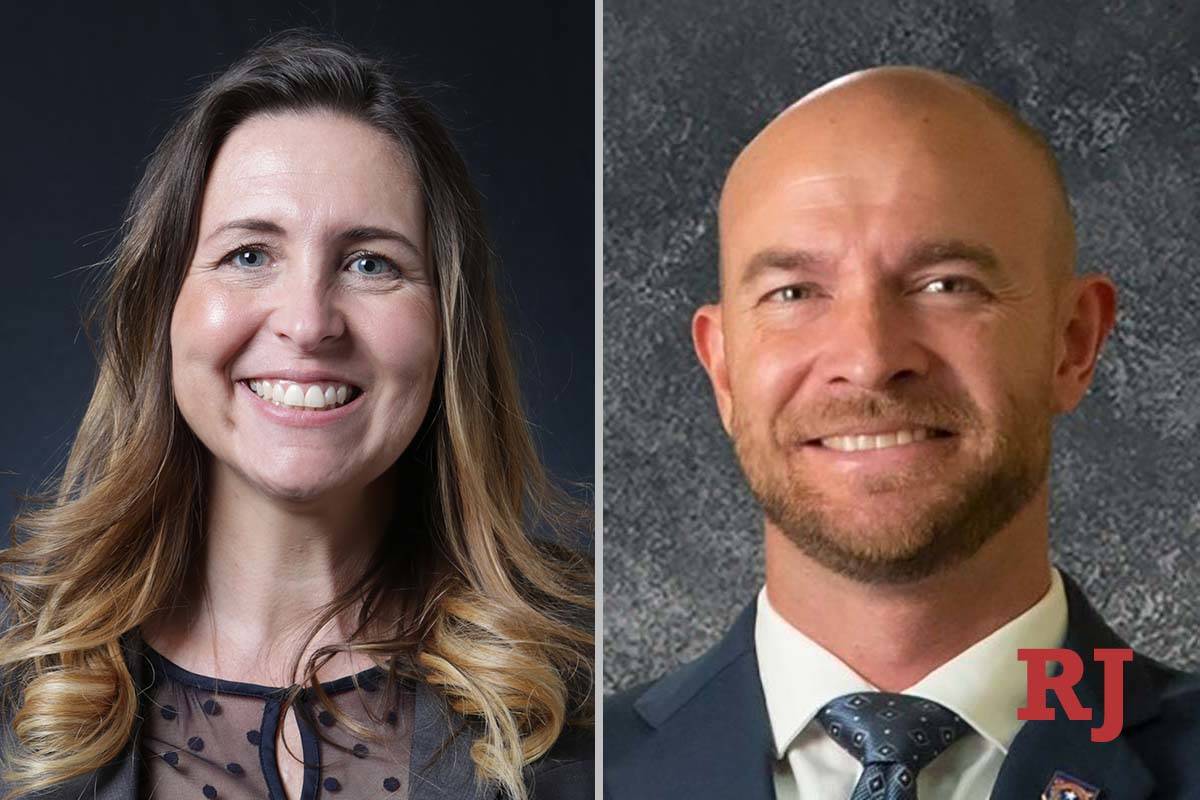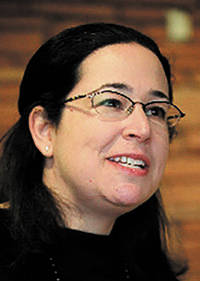Democrats struggling to gain supermajority in Nevada Legislature
CARSON CITY — After Democrats came just 24 votes shy of the goal in 2018, their hopes of a supermajority in both houses of the Legislature hinged on a handful of close state Senate and Assembly races that were too close to call in initial returns early Wednesday.
The majority of the 52 seats up for grabs aren’t considered competitive, either because only one candidate is running or there is a lopsided voter registration advantage. So determining the balance of power in the legislative branch this year comes down to just a handful of races, three in the Senate and four in the Assembly.
A supermajority is when one party holds two-thirds of the seats in a chamber, allowing it to pass tax and revenue increases without a single vote from the other side of the aisle and override a gubernatorial veto.
This cycle, Democrats needed to gain at least one seat in the Senate and not lose more than one seat in the Assembly to reach that two-thirds mark in both chambers. Republicans, however, could also gain seats in the Senate.
On the Assembly side, Republicans are focused on four key seats and need to flip at least two of them to break up the Democratic supermajority that left the GOP effectively powerless in that chamber in the 2019 legislative session.
Senate races
On the Senate side, where Democrats have a 13-8 majority, the battle for control of the chamber comes down to districts 5, 6 and 15. Two of those seats are held by Democrats.
In District 6, Senate Majority Leader Nicole Cannizzaro was trailing Republican April Becker by about 550 votes out of more than 56,000 cast, 50.5 percent to 49.5 percent. Cannizzaro won the seat in 2016 by a little more than 1,000 votes, or less than 2 percentage points. Voter registration in the district has inched a little more in favor of Democrats since 2016, and the margin now is about 8 percentage points.
The SD 6 contest is also the most expensive legislative race of the cycle. As of Oct. 1, the most recent campaign finance reporting deadline, each candidate had spent over $320,000. But Cannizzaro held a significant money edge going into the final weeks, with $582,000 in cash on hand compared with Becker’s $181,000.
In District 5, an open race, Republican Carrie Buck led Democrat Kristee Watson by about 1,000 votes out of more than 55,000 cast, 49.5 percent to 47.8 percent. Libertarian candidate Tim Hagan had 2.7 percent of the vote. Democrat Joyce Woodhouse, who is term-limited and cannot run again, won the seat in 2016 by a narrow margin, and the 6-point voter registration advantage in the district this year is about the same as it was in 2016 as well.
In Washoe County’s District 15 race, incumbent Republican Heidi Gansert led Democrat Wendy Jauregui-Jackins by 1,300 votes out of 70,200 cast, 51.7 percent to 48.3 percent. Voter registration in the district saw a significant shift over the past two years.
Gansert won the seat in 2016 by 11 percentage points. That year, Republicans had a voter registration advantage of roughly 2 percentage points in the district. This year, however, Democrats head into the last month of the election cycle holding a 1-point advantage.
Assembly races
In the Assembly, Republicans this cycle all but abandoned hopes of taking control of the lower chamber and instead put the bulk of their efforts toward races with competitive voter registration margins in hopes of netting at least two seats and breaking the Democrats’ supermajority.
Those races are Southern Nevada districts 2, 4, 29 and 37 and Sparks-based District 31.
In the Assembly District 2 race, an open seat with Republican incumbent John Hambrick not seeking re-election, Republican Heidi Kasama held a comfortable lead of more than 3,400 votes over Democrat Radhika “RPK” Kunnel, out of roughly 29,000 cast, 54.5 percent to 43.7 percent, with Independent Garrett LeDuff garnering 1.8 percent of the vote.
In the race for Assembly District 4, a rematch from 2018, Democratic incumbent Connie Munk trailed Republican Richard McArthur by 1,375 votes out of nearly 32,000 cast 52.1 percent to 47.9 percent. Munk beat McArthur two years ago by 120 votes, which was less than 0.5 points.
The race is equally tight this year, with voter registration between the parties almost identical; there are just 11 more Democrats than Republicans in the district.
In Assembly District 29, Republican challenger Steven Delisle trailed incumbent Democrat Lesley Cohen for the Henderson seat by about 200 votes out of more than 30,000 cast, 50.4 percent to 49.7 percent. Democrats hold a roughly 5-point registration advantage, and Cohen defeated Republican Stephen Silberkraus in 2018 by roughly that same margin. She also beat Silberkraus in 2016.
Assembly District 31 is a true outlier. Republicans hold a 3-point registration advantage in the Sparks district. But Democrat Skip Daly has held that seat for three out of the past four cycles, losing only in the 2014 “red wave,” which Republicans have not been able to match since. Daly trailed Republican Jill Dickman, whom he defeated in the previous two elections, by about 1,300 votes out of 33,600 cast, 51.8 percent to 48.2 percent, in initial returns.
And in District 37, incumbent Democrat Shea Backus trailed a well-funded Republican challenger, Andy Matthews, by 1,200 votes out of more than 32,000 cast, 51.8 percent to 48.2 percent. Backus won the seat in 2018 by 150 votes, and Democrats hold a 1-point voter registration advantage in the northwestern Las Vegas Valley district. Matthews outspent Backus by about $150,000 heading into October, but the candidates had very close amounts of cash on hand heading into the final weeks of the election.
The results were current as of 2:30 a.m. Wednesday.
Contact Capital Bureau Chief Colton Lochhead at clochhead@reviewjournal.com. Follow @ColtonLochhead on Twitter. Contact Capital Bureau reporter Bill Dentzer at bdentzer@reviewjournal.com. Follow @DentzerNews on Twitter.


















